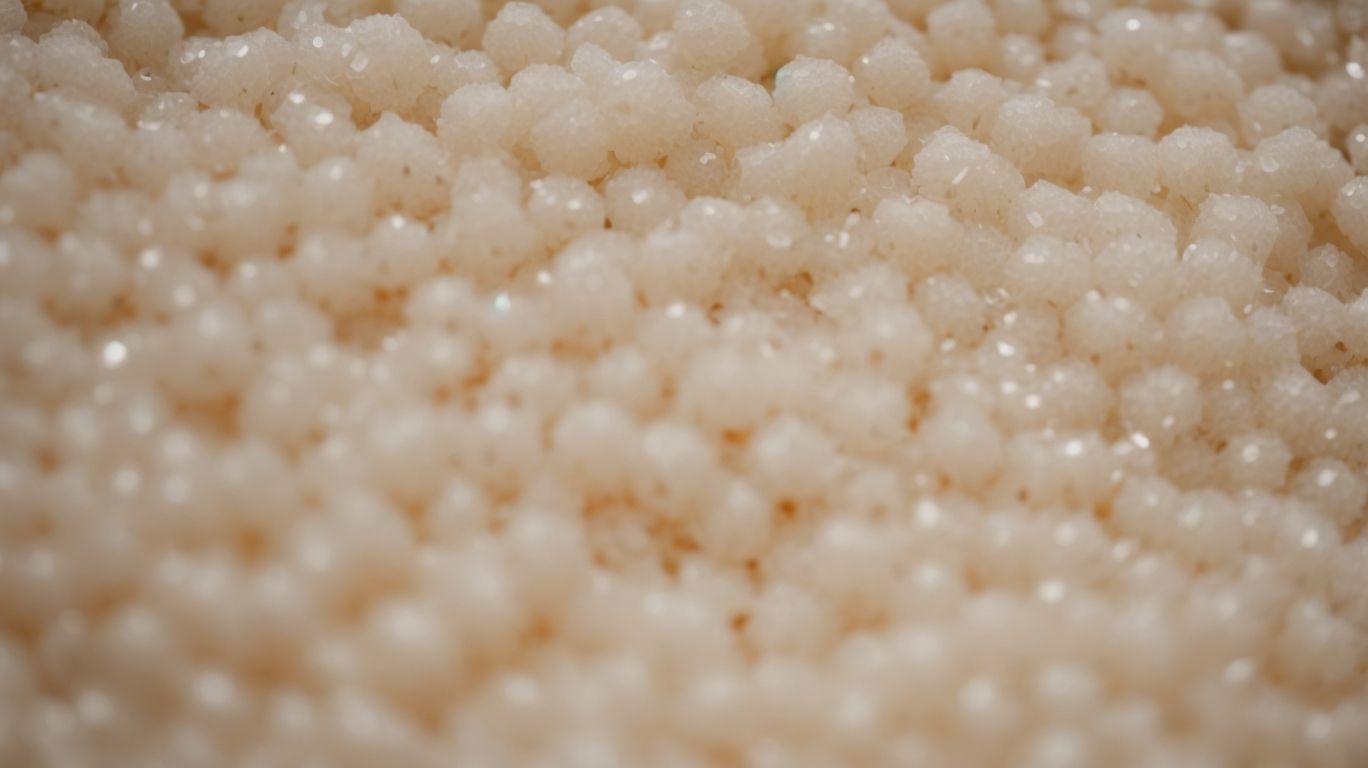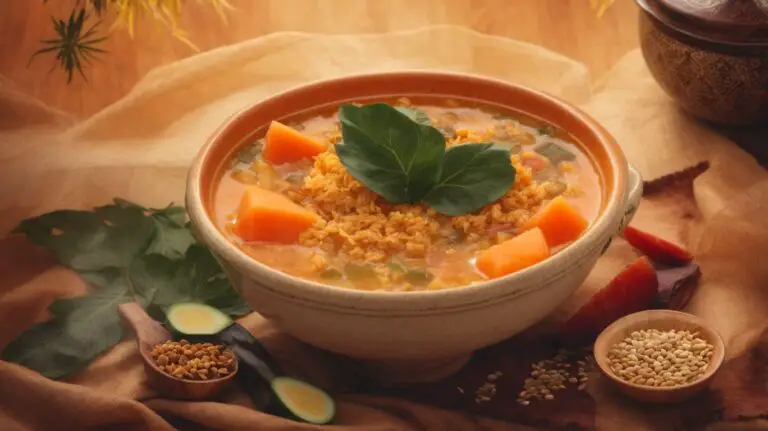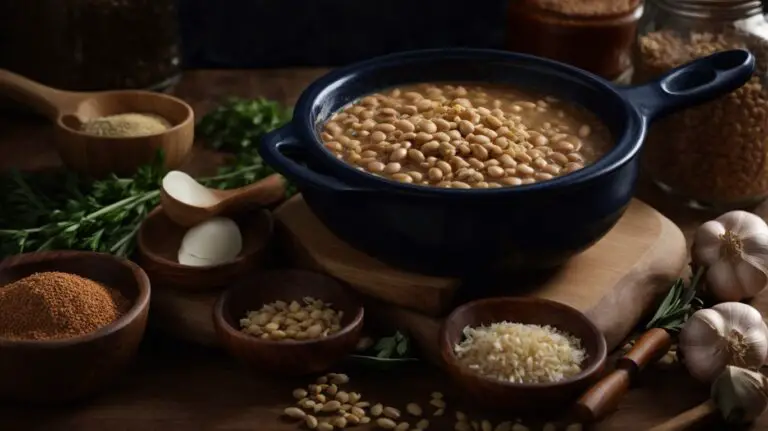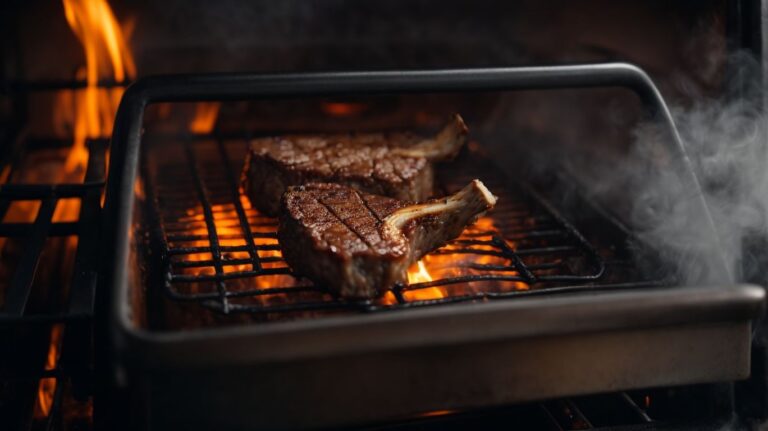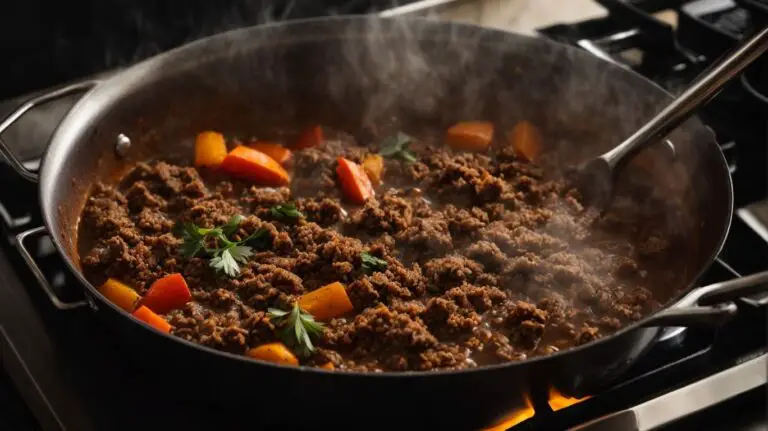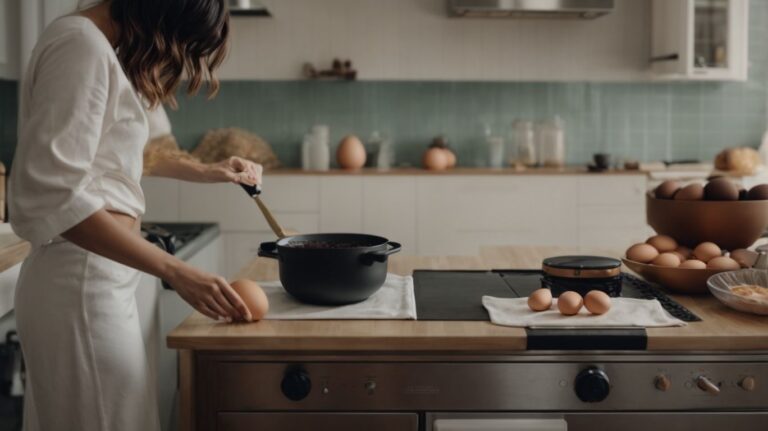How to Cook Rice After Soaking?
Are you tired of ending up with mushy or undercooked rice every time you cook?
Soaking your rice before cooking can make all the difference in achieving perfectly fluffy and tender grains.
We will explore the purpose of soaking rice, the types of rice that benefit from this technique, and step-by-step instructions on how to soak and cook rice to perfection.
Stay tuned for tips on achieving the best results and elevating your rice dishes to the next level!
Key Takeaways:
What Is the Purpose of Soaking Rice Before Cooking?
The purpose of soaking rice before cooking is to enhance its texture, remove excess starch, and improve the overall flavor and aroma of the cooked grains.
When you soak rice, it allows the grains to absorb water gradually, resulting in more evenly cooked rice with a fluffy texture. Soaking helps break down the outer layer of rice, making it easier to digest and reducing the cooking time. The process also removes surface starch, preventing the rice from becoming too sticky or mushy during cooking.
Soaking rice can be particularly beneficial for long-grain varieties like Basmati or Jasmine rice, accentuating their distinct aroma and elongated grains when cooked. It’s a common practice in many culinary traditions and is key to achieving that perfect rice consistency in various dishes.
What Types of Rice Should Be Soaked?
Certain types of rice such as aromatic varieties like Basmati and Jasmine, as well as long grain, short grain, and sticky rice, benefit from soaking before cooking to achieve optimal results.
Soaking rice helps to break down the surface starch, which allows the grains to cook evenly and absorb flavors more effectively. Basmati rice, known for its delicate fragrance and elongated grains, benefits from soaking as it helps enhance its fluffiness and distinct aroma.
Jasmine rice, with its subtle floral scent, also becomes more fragrant and cooks to a light, fluffy texture when soaked before cooking. The process of soaking is particularly helpful for long-grain rice varieties, ensuring they remain separate and fluffy rather than clumping together.
How to Soak Rice Before Cooking?
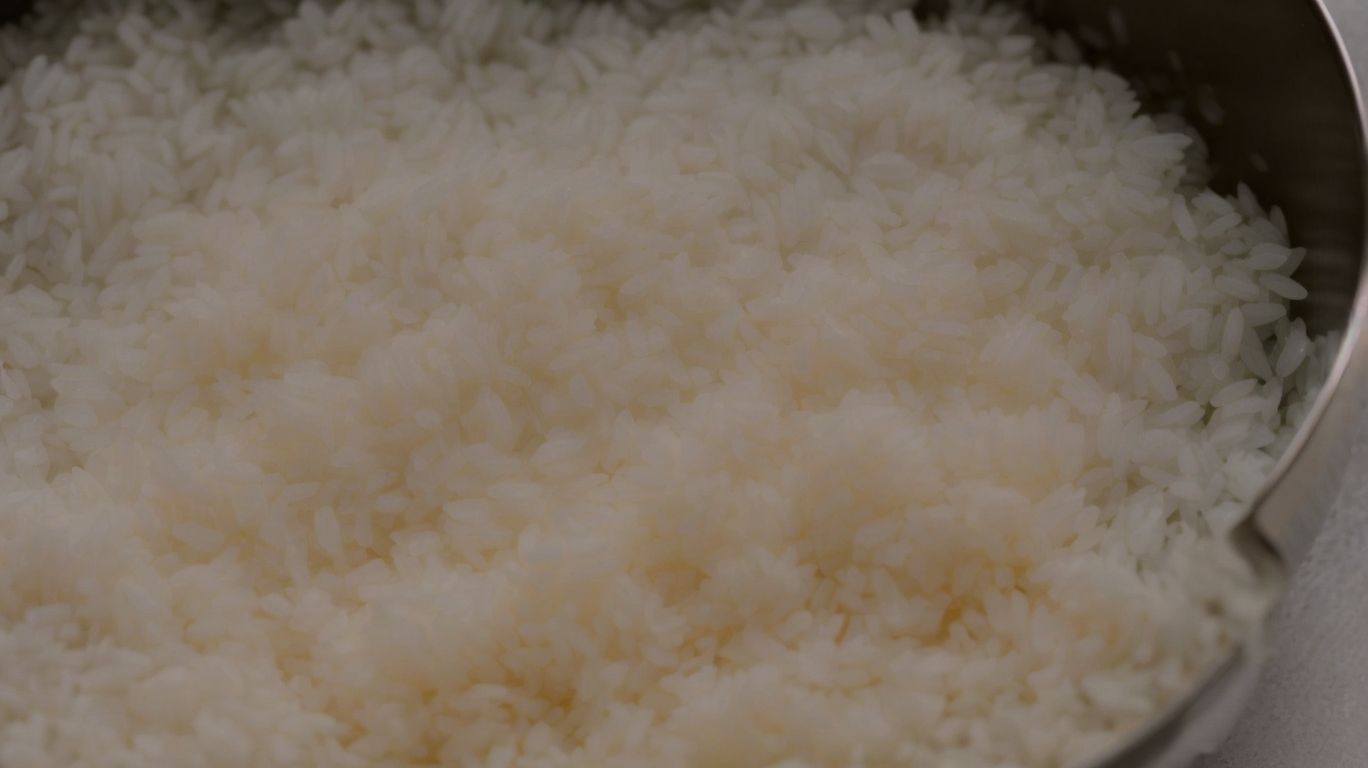
Credits: Poormet.Com – Anthony Robinson
To soak rice before cooking, various methods and techniques can be employed depending on the desired outcome, such as preparing rice for pilaf, risotto, or other dishes that benefit from soaked grains.
Step 1: Measure the Rice
The first step in soaking rice before cooking is to accurately measure the quantity of rice needed based on the desired serving size and recipe requirements.
To ensure you achieve the perfect texture and consistency when cooking rice, the precise measurement of rice is crucial. Using a measuring cup, scoop the rice and level it off with a flat edge to remove any excess. Different types of rice may require slightly different measurements, so always refer to the packaging or recipe instructions for guidance. A common rule of thumb is one cup of uncooked rice typically yields three cups of cooked rice, but this can vary depending on the variety. Accuracy in measurement leads to satisfying culinary outcomes.
Step 2: Rinse the Rice
After measuring the rice, the next step involves rinsing the grains thoroughly under cold water to remove debris, excess starch, and surface impurities.
This crucial step in rice preparation is essential for not only improving the overall hygiene of the rice but also enhancing its texture and taste. By rinsing the rice, you are effectively washing away any dust, dirt, or other contaminants that may be present. Rinsing helps to remove excess starch from the grains, which can prevent clumping during cooking and result in fluffier, separated rice grains. This process also plays a role in reducing the stickiness of the rice, making it easier to work with when cooking various dishes. Rinsing the rice ensures a cleaner, better-tasting final product that will elevate your culinary creations.
Step 3: Soak the Rice
Once the rice is rinsed, it should be soaked in an adequate amount of water for a specified duration based on the type of rice and desired cooking method.
For most varieties of rice, it is recommended to soak them for about 30 minutes to a few hours. Short-grain rice, like sushi rice, benefits from a shorter soaking time, typically around 30 minutes, as it helps the grains retain their natural stickiness. On the other hand, long-grain rice, such as basmati or jasmine, can be soaked for a couple of hours to ensure a fluffier texture.
The water-to-rice ratio during soaking is crucial, usually around 2:1. This ratio ensures that the rice grains absorb just enough water without becoming waterlogged. Soaking rice helps soften the outer bran layer, making it easier to digest and allowing for quicker and more even cooking, resulting in perfectly fluffy and separated grains in your final dish.
How Long Should Rice Be Soaked Before Cooking?
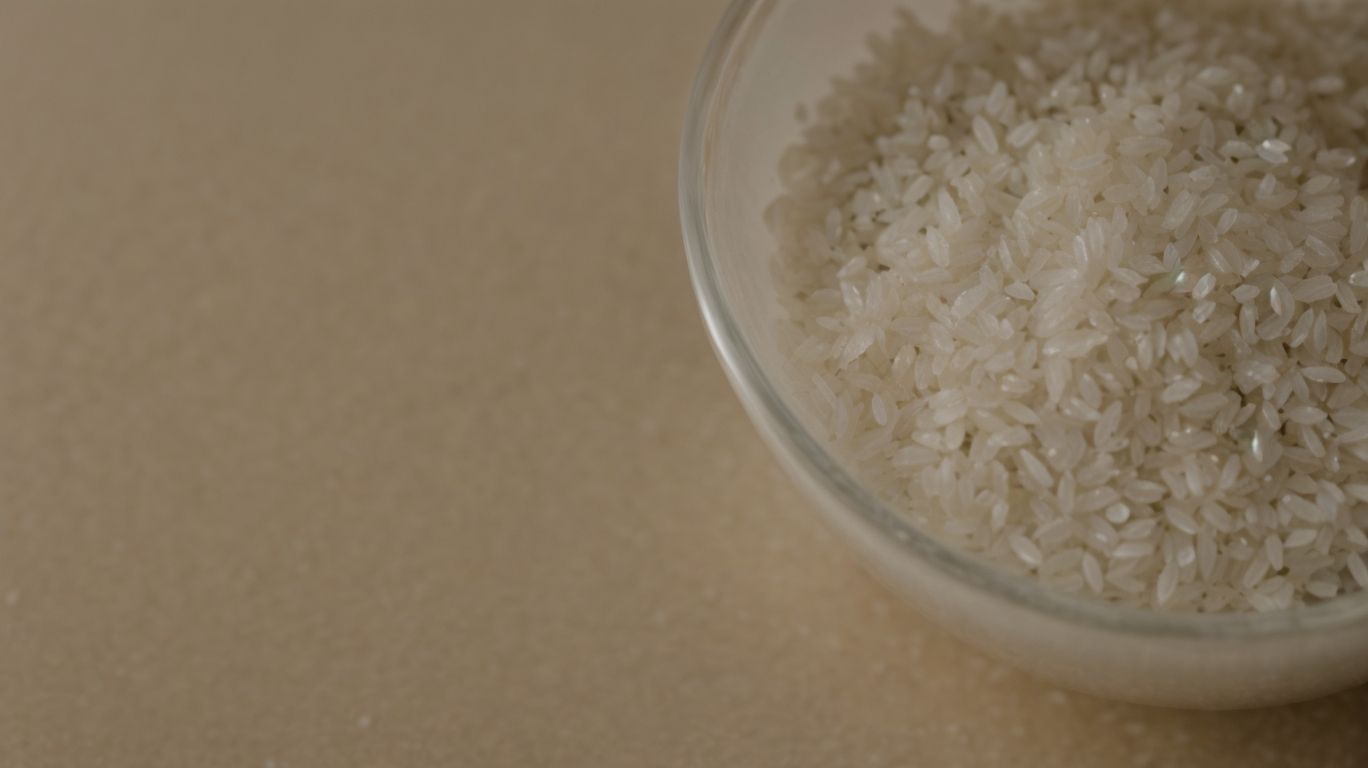
Credits: Poormet.Com – Gerald Rodriguez
The length of time that rice should be soaked before cooking varies depending on the type of rice, with different varieties requiring specific soaking durations to achieve ideal texture and flavor in the cooked grains.
Why Is the Length of Soaking Time Important?
The length of soaking time is crucial as it allows the rice grains to absorb water, soften, and release excess starch, resulting in improved texture, flavor, and overall cooking performance.
When rice is soaked for a shorter period, it may not fully absorb water, leading to uneven cooking and a stickier consistency once cooked. In contrast, soaking rice for an extended time period allows it to fully hydrate, resulting in fluffier grains and preventing them from becoming mushy. The hydration process also aids in breaking down complex carbohydrates, making the rice easier to digest and enhancing its nutritional value.
How to Cook Rice After Soaking?
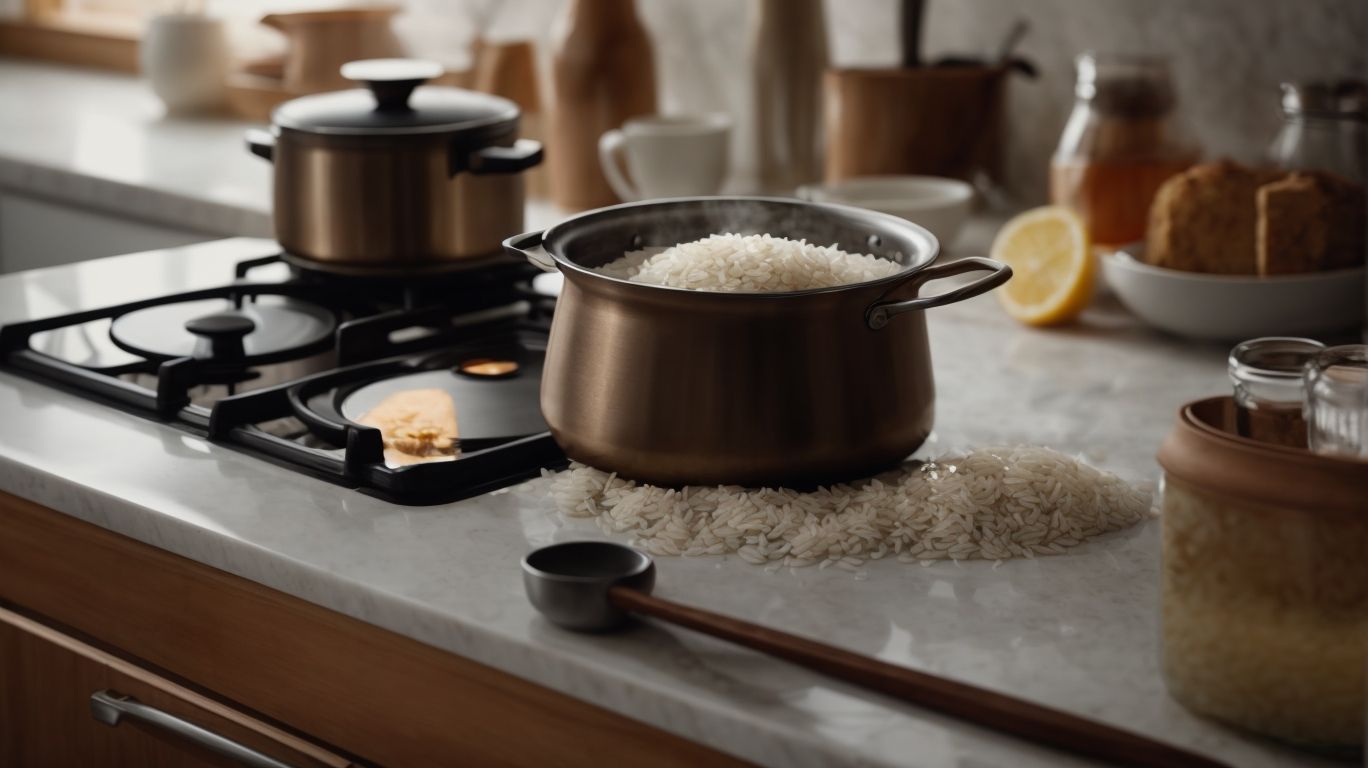
Credits: Poormet.Com – Bruce Flores
After soaking the rice, cooking it to perfection involves a series of steps such as draining the grains, adding water and salt, bringing to a boil, simmering, fluffing, and serving the cooked rice.
Step 1: Drain the Soaked Rice
The first step in cooking soaked rice is to drain the grains using a fine mesh strainer to remove excess water and ensure the desired moisture content for cooking.
Properly draining soaked rice is crucial as it helps in achieving that perfect fluffy texture and prevents the rice from turning mushy during cooking. After letting the rice sit in water to soften, draining it effectively can make all the difference in the final dish’s taste and presentation. By using a fine mesh strainer, you can easily separate the grains from the excess water, allowing for a more controlled cooking process. This essential technique ensures that your rice cooks evenly and absorbs the flavors of the dish properly, resulting in a delightful dining experience.
Step 2: Add Water and Salt
Following draining, the next step involves adding the appropriate amount of water and salt to the soaked rice to enhance flavor and facilitate the cooking process.
For perfectly seasoned rice, the water-to-rice ratio is crucial; typically, it’s around 1.5 to 2 cups of water per cup of rice. This balance ensures that the rice cooks evenly and absorbs the flavors effectively.
Seasoning plays a vital role in transforming the blandness of plain rice into a delightful dish. Salt not only enhances the taste but also helps with the texture, ensuring each grain is infused with just the right amount of flavor.
Step 3: Bring to a Boil
Once water and salt are added, the soaked rice should be brought to a vigorous boil to initiate the cooking process and ensure even distribution of heat for uniform grain texture.
When the rice reaches the boiling stage, the hot water starts to penetrate the outer layers of the grains, kickstarting the absorption process as the starches begin to gelatinize.
This critical step not only begins the transformation of the rice from raw to cooked but also plays a crucial role in the development of its final texture and consistency.
Step 4: Reduce Heat and Simmer
After boiling, the rice should be simmered over low heat to allow for gradual absorption of water, ensuring that the grains cook evenly and achieve the desired tenderness.
Simmering the rice over low heat is a crucial step in the cooking process. This gentle cooking method helps the rice absorb water slowly, allowing the grains to expand and soften without becoming mushy.
The low heat provides a controlled environment for the rice to cook evenly from all sides, ensuring a consistent texture throughout. It also allows the flavors to develop more deeply, resulting in a rich and satisfying dish.
Patience is key when simmering rice, as rushing the process can lead to uneven cooking and a less-than-perfect final result. By maintaining a gentle simmer and periodically checking on the rice, you can achieve perfectly cooked grains every time.
Step 5: Fluff and Serve
Once the rice has absorbed the water and reached the desired consistency, it should be fluffed gently with a fork to separate the grains before serving the perfectly cooked rice.
Fluffing the rice is a crucial step in the final preparation process as it helps in separating the grains, preventing clumping, and giving the dish an appealing presentation. This simple technique not only enhances the texture but also allows any excess moisture to evaporate, ensuring each grain is light and fluffy.
When fluffing the rice, it’s important to use a fork rather than a spoon to avoid crushing the grains. Gently insert the fork into the rice and fluff it by lifting and turning the grains, creating space between each one.
Tips for Cooking Perfect Rice After Soaking
To achieve perfectly cooked rice after soaking, it’s essential to follow specific tips such as using the right ratio of rice to water, seasoning for more flavorful rice, avoiding stirring during cooking, and allowing the rice to rest before fluffing.
Use the Right Ratio of Rice to Water
Achieving the perfect rice texture after soaking depends on using the correct ratio of rice to water, ensuring that the grains cook evenly and reach the desired consistency.
Too much water can result in mushy rice, while too little can leave it undercooked and hard. For long-grain rice, such as Basmati or Jasmine, the ideal ratio is typically 1:1.5 to 1:1.75 (rice to water). Short-grain rice varieties like Arborio or sushi rice require more water, with ratios usually around 1:1.25 to 1:1.5. Always adjust based on personal preferences, rice variety, and cooking method. Remember, the water absorption capacity can vary between different types of rice, so a slight adjustment may be needed for perfection.
Season the Water for More Flavorful Rice
Enhancing the flavor of cooked rice can be achieved by seasoning the cooking water with aromatic ingredients or salts, imparting additional depth and richness to the final dish.
When you season the water before cooking rice, the grains absorb the flavors as they cook, resulting in a more flavorful and aromatic dish. The process of infusing the cooking water with spices, herbs, or bouillon cubes allows the rice to soak up these savory notes, elevating the taste profile of the entire dish. Adding ingredients such as garlic, ginger, or bay leaves to the water not only enhances the flavor but also creates a fragrant, inviting aroma in your kitchen while cooking.
Don’t Stir the Rice While Cooking
During the cooking process, it’s crucial to avoid stirring the rice as it may disrupt the grain structure and lead to uneven texture or clumping of the cooked grains.
When rice is stirred excessively while cooking, the grains rub against each other, causing the release of starch into the cooking liquid. This can result in a sticky and mushy consistency, ruining the desired fluffy texture. By keeping the lid on and allowing the rice to steam gently, you’re allowing it to cook evenly without interference. Remember, minimal disturbance is key to achieving perfectly cooked rice every time.
Let the Rice Rest Before Fluffing
Allowing the cooked rice to rest off the heat for a brief period before fluffing helps in further moisture absorption and enhances the overall texture and tenderness of the grains.
During this resting stage, the rice continues to steam gently, ensuring that any remaining moisture is evenly distributed throughout the grains. This additional time also allows for some carryover cooking, contributing to the rice achieving its ideal consistency. Resting is crucial as it gives the starches in the rice time to firm up, resulting in a firmer, less sticky final product. This short rest period contributes significantly to the fluffiness and lightness of the rice, making it more delightful to eat.
Frequently Asked Questions
What is the purpose of soaking rice before cooking?
Soaking rice before cooking helps to soften the grains and remove any impurities, resulting in fluffier and more evenly cooked rice. It can also help to reduce cooking time and improve digestibility.
How long should I soak rice for before cooking?
The length of time needed to soak rice can vary depending on the type of rice and personal preference. Generally, 30 minutes to 1 hour is sufficient for most types of rice. However, certain varieties may benefit from longer soaking times.
Do I need to rinse the rice after soaking?
It is recommended to rinse the rice after soaking to remove any excess starch and impurities that may have been released during the soaking process. This will result in a cleaner and more flavorful final dish.
Can I use the soaking water for cooking rice?
No, it is not recommended to use the soaking water for cooking rice. This water may contain impurities and can result in a cloudy or unpleasant tasting final dish. It is best to discard the soaking water and use fresh water for cooking.
Do I need to adjust the amount of water when cooking soaked rice?
Yes, you may need to adjust the amount of water when cooking soaked rice. As the rice has already absorbed some water during soaking, you may need to reduce the amount of water used for cooking to avoid ending up with mushy or overcooked rice.
Can I soak rice in advance and keep it in the refrigerator?
Yes, you can soak rice in advance and keep it in the refrigerator for up to 24 hours. This can save time and make meal prep easier. Just remember to rinse the rice before cooking and adjust the amount of water as needed.

